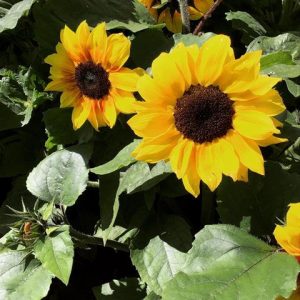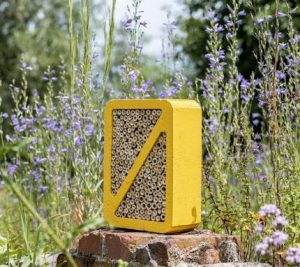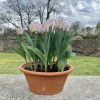Plant with Purpose for Wildlife this Spring – Over the last year there has been an increase in wildlife-friendly gardening, with more people planting pollen-rich plants to provide vital food and shelter for bugs, birds and mammals. And with the RHS predicting that gardens bursting with colour and buzzing with wildlife is set to be one of the biggest trends of 2024, many will be wondering what the best plants to for their garden are.
As we head into spring with trowel, seeds and compost in hand, expert wildlife brand CJ Wildlife has shared its top-tips for creating a nature-friendly garden.
Plant pollinator favourites:
One simple way gardeners can help pollinators is by planting flowers that provide food for them throughout the year. Late winter to early spring is a critical time for early-riser bees. As the climate continues to warm, bees are awakening much earlier and are struggling to find food to survive, but by providing early-nectar for them with blooms like crocus, winter-flowering hellebores, and snowdrops they can gather energy to stay warm and well.
Another great way to encourage pollinators to your patch is to plant wildflowers. Wildflower meadows are becoming an increasingly popular trend in urban gardens, as the flowers require little attention and look beautiful, too! What’s more, wildflowers are an excellent and consistent source of pollen throughout the spring to autumn months. Consider planting a selection, such as dogrose, nasturtium, birdsfoot trefoil and wild thyme for a vibrant and colourful display.

Blooms for birds:
It’s not just bees and bugs that benefit from plants – some flowers provide a vital source of food for birds too! Self-seeding varieties like black-eyed Susan, coneflowers and sunflowers all drop their seeds when the flower has finished blooming. This then leaves the delicious and nutritious seeds exposed to fall to the floor or be pecked out by feathered friends. What’s more, the seeds that have escaped being a blackbird’s brunch, will sit in the soil and become new flowers, meaning the garden will bloom twice as bold and bright next year with minimal effort!
Sheltering plants like ivy and honeysuckle are also beneficial additions to the garden. Not only do they provide a safe and dry place to shelter for feathered friends, but they also attract an array of insects for birds to feast on
Bat friendly flowers:
Bats makes up over a quarter of all British mammals, yet four out of 17 of them are red-listed species. As an identified ‘indicator species’, having bats in your garden is a good sign of a green and healthy environment. One major factor that has caused these winged wonders to decline is a lack of food, but thankfully we can help support them in our back gardens.
By planting night-scented blooms, you can encourage more insects to feast after hours, allowing bats to enjoy a hard-earned meal of bugs, moths, and flies. Some night-scented flowers like Honeysuckle (Lonicera periclimenum), Phlox and White Jasmine (Jasminum officinale) offer a beautiful bloom throughout the day, but their sweet scent in the evening will attract moths and night-flying insects for bats to enjoy! Opting for white or pale blue flowers is also advantageous as they are easier to see during low light and encourage night-flying insects to gather.

Remember, bugs are beneficial!
Bugs are a vital part of our ecosystem, and we must encourage them to our gardens for a host of reasons. From pollinating properties, to providing food source for mammals and birds, insects are crucial for our wildlife and plant life to thrive. Small actions like planting flowers can have a huge benefit for bugs, but there is more we can do to support them.
Providing insects with shelter and a dry place to rest is a great way to keep them around and in the garden. Introducing a bug hotel to the gardens allows insects a safe, dry and warm place to rest, reproduce and protect themselves in between the important work they do for the environment!
The Salina Insect Hotel is a great option, as the bright yellow exterior attracts creepy crawlies to come take a peek, and soon they will settle into the burrows and tubes inside. The Salina Insect Hotel works best when placed in a sunny area of the garden, near flowerbeds and greenery, so hungry bugs can go find a delicious meal with ease.
To browse more insect habitats by CJ Wildlife, visit the website at www.birdfood.co.uk
Lilly Light


